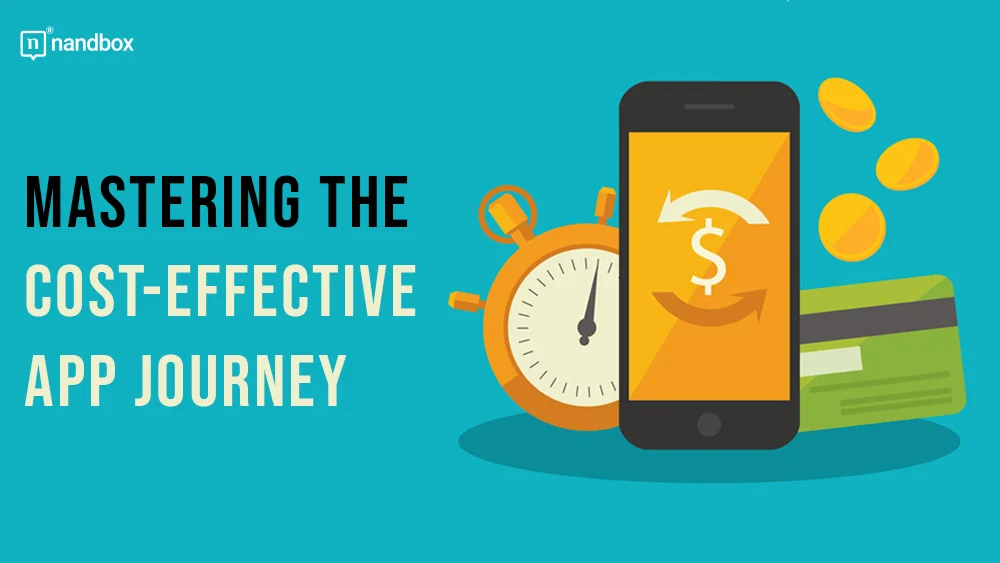In today’s digital age, app development has become a dreamcatcher for innovators, entrepreneurs, and creatives alike. The allure of turning a concept into a tangible, user-friendly application drives countless individuals and businesses to venture into app development. However, amidst the excitement lies a stark reality—the cost crunch that often accompanies such endeavors.
Developing an app can be financially daunting, but with the right strategies and resources, navigating this journey cost-effectively is possible. This article charts the course from conception to completion, providing insights and actionable steps to master the art of cost-effective app development.
Planning Your App: A Foundation for Success
Before embarking on the exciting journey of building your app, it’s crucial to lay a solid foundation. This initial planning stage sets the direction for a successful launch and future growth. Here, we’ll delve into the key steps in planning your app effectively, ensuring it resonates with users and remains cost-conscious.
Finding Your Niche
According to a recent study by Statista, over 4.8 million mobile apps were available for download on the Google Play Store as of the fourth quarter of 2023. In this saturated market, identifying your target audience and their specific needs is paramount.
- Who are you trying to reach with your app? Define your ideal user by considering demographics, interests, and tech-savviness.
- What challenges do they face? Conduct thorough market research through surveys, online forums, and competitor analysis to understand their pain points.
- Does your app solve a real problem? Validate your idea by gathering user feedback through prototypes or focus groups. Refining your concept based on user input ensures your app addresses a genuine need and stands out.
Crafting Your Value Proposition
Once you clearly understand your target audience, it’s time to define what makes your app truly special.
- What unique benefit does your app offer? In today’s fast-paced work environment, managing schedules efficiently is essential for maximizing productivity and employee satisfaction. Many businesses now rely on work scheduling software to streamline these processes, ensuring that staffing aligns well with business demands.How does it solve user problems better than existing solutions? Suppose you’re planning to launch a new work scheduling software. In a crowded market, your value proposition could focus on ease of use for managers and employees, allowing for quick schedule creation, drag-and-drop functionality, and seamless communication features—all at a competitive price point compared to complex enterprise software.
Work scheduling software also improves team coordination by sending real-time notifications and updates, reducing the risk of missed shifts or overstaffing. Additionally, integrating scheduling with payroll or time-tracking features can save hours in administrative work each week, giving your business a streamlined approach to workforce management.
- Focus on the value proposition: This concise statement succinctly explains why users should choose your app over others. It should be clear and compelling, and highlight your app’s core benefit.
Building a Cost-Effective Development Plan
Setting realistic expectations is crucial for a smooth and budget-friendly development process.
- Start with a Minimum Viable Product (MVP): Instead of trying to build every feature at once, prioritize core functionalities that deliver the essential user experience. A mobile app development timeline allows you to launch your app sooner, gather user feedback, and iterate based on real-world data.
- Embrace online tools and resources: Numerous online platforms offer affordable design assets, app development tools, and pre-built templates. Explore these options to potentially reduce development costs without sacrificing quality.
Designing and Developing Your App Within Budget
Let’s delve into the practical steps of building your app without compromising quality while staying within budget. We’ll explore cost-effective approaches to both design and development, ensuring your app looks great and functions flawlessly without breaking the bank.
Cross-Platform Considerations
According to a 2023 IDC report, a leading market intelligence firm, the global market for mobile app development tools is expected to reach a staggering $87.5 billion by 2026. This rapid growth highlights the increasing demand for app creation. However, the traditional route of building separate native apps for Android and iOS can be expensive.
Here’s where cross-platform development comes in. It allows you to create a single codebase that can be deployed on both Android and iOS platforms. This translates to significant cost savings as you’re building the app once and deploying it twice.
However, remember that some complex apps might require native development for optimal performance. The key is to weigh the pros and cons based on your app’s specific needs.
Luckily, there are several cost-effective cross-platform frameworks available, such as Flutter and React Native, that can help you achieve a native-like user experience without the hefty price tag.
Design on a Budget
Creating a visually appealing and user-friendly app interface doesn’t require a hefty design budget. Aside from using an app development cost calculator, you can use these cost-effective strategies:
- Free and Open-Source Resources: Numerous websites offer free icons, stock photos, and UI/UX design templates. These resources can serve as a solid foundation for your app’s design.
- Crowdsourcing Design Elements: Platforms like 99designs allow you to launch design contests for your app’s logo or UI elements. This approach can spark creative ideas and lead to a unique, cost-effective design solution.
- Freelance or Student Design Talent: Consider hiring freelance designers or tapping into student design talent. Freelance platforms offer a vast pool of skilled designers at various price points. Universities often have design programs where students are eager to gain real-world experience, potentially at a lower cost.
Finding and Managing Development Talent
The success of your app heavily relies on finding qualified developers who can bring your vision to life. Here’s how to find and manage development talent while keeping costs in check:
- Utilize Online Platforms: Upwork or Fiverr offers a convenient way to connect with freelance app developers worldwide. You can post project details, receive proposals, and review developer profiles before hiring.
- Clear Project Briefs & Communication: Clearly define your app’s functionalities, target audience, and desired user experience in a well-documented project brief. Maintain consistent and clear communication with your development team throughout the project to avoid misunderstandings and costly rework.
Launching and Growing Your App without Breaking the Bank
Navigating the App Store Maze
Submitting your app to platforms like Google Play and the App Store can be daunting, but understanding the process is key to a successful launch. Optimizing your app store listing with targeted keywords and engaging visuals increases visibility and enhances user acquisition.
Marketing Mastery on a Budget
Effective marketing doesn’t always require a hefty budget. Leveraging social media, exploring cost-effective advertising options, and building pre-launch hype through community engagement can generate buzz around your app without draining your resources.
Data-Driven Decisions
Implementing app analytics tools provides valuable insights into user behavior and performance metrics. A/B testing different features and app store creatives allows for continuous optimization, ensuring your app resonates with users and drives engagement.
Avoiding Costly Pitfalls
Launching a successful app requires careful planning and execution. Even the most promising ideas can be derailed by common mistakes. Let’s explore three pitfalls to watch out for and how to navigate around them:
Feature Creep
Imagine you start building a simple to-do list app, but then get carried away adding fancy features like social media integration or complex analytics. This is feature creep and can bloat your development timeline and budget.
Solution: Prioritize ruthlessly! Focus on core functionalities that solve your target audience’s most pressing problems.
Unrealistic Expectations
Developing a high-quality app takes time and effort. Don’t expect to launch a game-changer overnight.
Solution: Set realistic milestones and timelines based on your budget and development team’s capabilities. Build and test an MVP (minimum viable product) first to get user feedback early on.
Communication Silos
Misunderstandings between you, your designers, and developers can lead to costly rework.
Solution: Establish clear communication channels from the beginning. Use project management tools and hold regular meetings to ensure everyone is on the same page.
Conclusion: Your App, Launched and Thriving
As you embark on your cost-effective app development journey, remember that success doesn’t end with launch day. Ongoing maintenance, updates, and exploration of monetization strategies are essential for sustaining long-term success in the ever-evolving app market. Armed with the strategies outlined in this article, you’re equipped to take your app from concept to completion and beyond.





